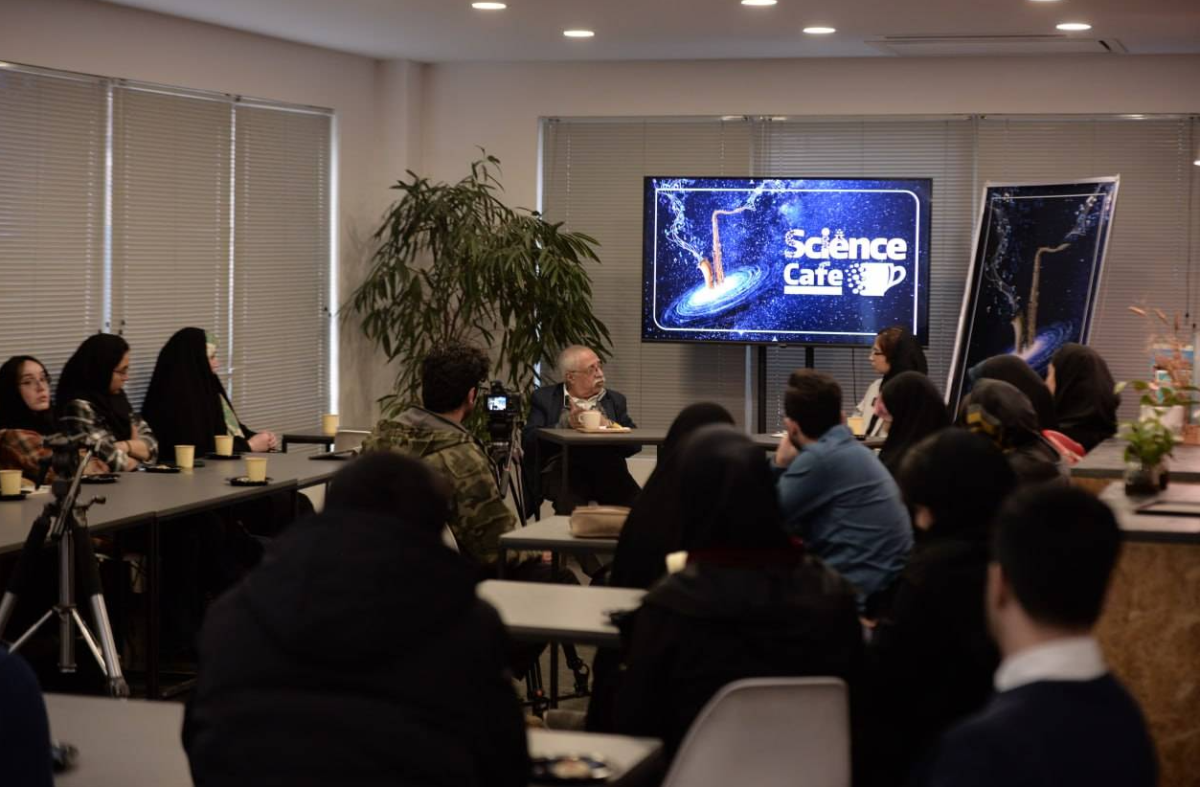We Compensate for Our Lack of Knowledge in Physics with String Theory


The 25th Mustafa (pbuh) Prize Science Café was held at the Box venue of Sharif University of Technology with the presence of enthusiasts from various scientific backgrounds.
MSTF media reports:
This Science Café focused on string theory and featured Hesamodin Arfaei, a physicist and professor at the Faculty of Physics at Sharif University of Technology. Arfaei explained the historical trajectory of string theory in simple terms, highlighting its remarkable successes in explaining some of the universe’s unanswered phenomena as well as the challenges it faces.
To Understand the Deep Dimensions of This Universe, We Need Tools
At the beginning of the session, Arfaei spoke about the fundamental components of the universe, stating:
"If we want to determine what the universe is made of in unconventional dimensions that we cannot see, we can examine it at different scales. To understand the deep dimensions, we need tools. However, when we talk about structure, we encounter different structures at different scales. Perhaps the extremely small and extremely large dimensions of the universe are intertwined. The reason is that the vast scale of the universe provides insights into the distant past, while the tiny scale of the universe is what we seek to understand today. These two aspects are interconnected."
Emphasizing the importance of theories, the professor stated that a theory’s success depends on its ability to withstand experimental tests:
"String theory aims to uncover the extremely small dimensions of the universe. In the large-scale universe, we see galaxies and the cosmos, and recently, black holes have been frequently observed, which also relate to the microscopic scales. However, models do not dictate how the universe operates; rather, we observe the universe and try to understand its workings. Theories exist to explain our experiments and observations. Ultimately, experiments are the dominant factor for us. In physics, what determines the validity of our statements and serves as the final judge is experimentation."
We Understand the Universe Through Experiments
Regarding the structure of the universe, Arfaei explained:
"Today, we believe that the universe has a structure, consisting of tiny particles like electrons and neutrons, as well as protons and neutrons that we deal with in experiments. We understand the structure of this microscopic world down to a scale of 10⁻¹⁸ meters. These scales determine the state of different realms. If we talk in terms of meters and centimeters, everyone understands, but when we go smaller, we reach tools that humans do not use directly. The visible world can be seen with the naked eye, but the world of molecules and cells requires instruments."
He continued:
"At the scale of 10⁻¹⁸ meters, we perceive the universe as point-like. Apparently, electrons do not have a more complex structure than what we currently know about them. However, protons have a much more intricate structure. They contain three fundamental quarks, along with a large number of fluctuating quarks that continuously appear and disappear. We have developed a solid theory for particles, and where uncertainties arose, we confirmed them through experiments. Experimentation, theory, and scientific models have worked together to give us extensive knowledge of the universe."
Dark Matter Makes Up 25% of the Universe’s Components
Arfaei noted:
"We have identified all the components of this universe down to 10⁻¹⁸ meters, within the limits of our detection capabilities. However, cosmic observations have shown that our universe extends beyond what we can directly observe. The dominant part of the observable universe consists of neutrons, protons, and electrons, whether within atomic nuclei or as free particles. These account for only 5% of the universe. Another 25% is something called dark matter—we know it exists, but we do not know what it is. Dark matter interacts very weakly, making it difficult to detect."
He further elaborated:
"Dark matter does not reflect light back to us and does not interact with light in a way that we can see—if it does, the interaction is too weak to be detected in experiments. However, cosmic observations have confirmed its existence. We can explain only 5% of the universe well, but 25% consists of dark matter— a material existence that is called 'dark' because it cannot be seen directly; we infer its presence through its gravitational effects. Without dark matter, structures such as galaxies would not have formed. In addition, 70% of the universe consists of dark energy, whose effects we observe in the cosmos, but which we have not directly detected in laboratories. This is our current state of knowledge. However, beyond the scale of 10⁻¹⁸ meters, we have no experimental data, only theoretical hypotheses."
At the end of the session, Hesamodin Arfaei stated:
"String theory predicts a significant amount of matter. Therefore, it might provide a framework to explain dark matter—and possibly even dark energy. One of the crucial roles of science is to reduce our scientific ignorance. In this case, many of the unknowns we face can be addressed within the framework of string theory, allowing us to diminish our ignorance. Ultimately, we must recognize that science is not an individual or personal endeavor; different people have each contributed a brick to build this vast edifice of knowledge."
Science Café is an outreach and discussion-based event where scientific topics are presented in simple language outside conventional academic and scientific settings, making them accessible to the general public.